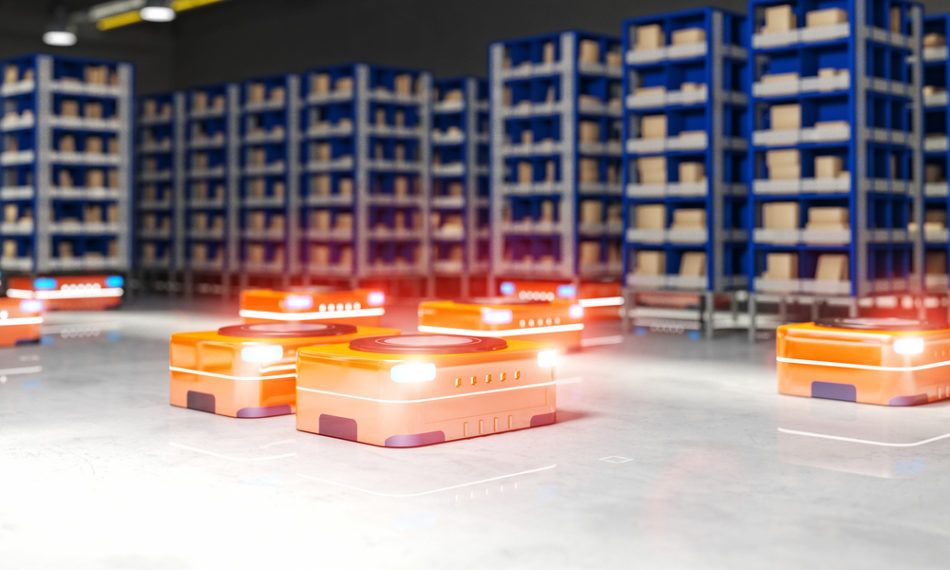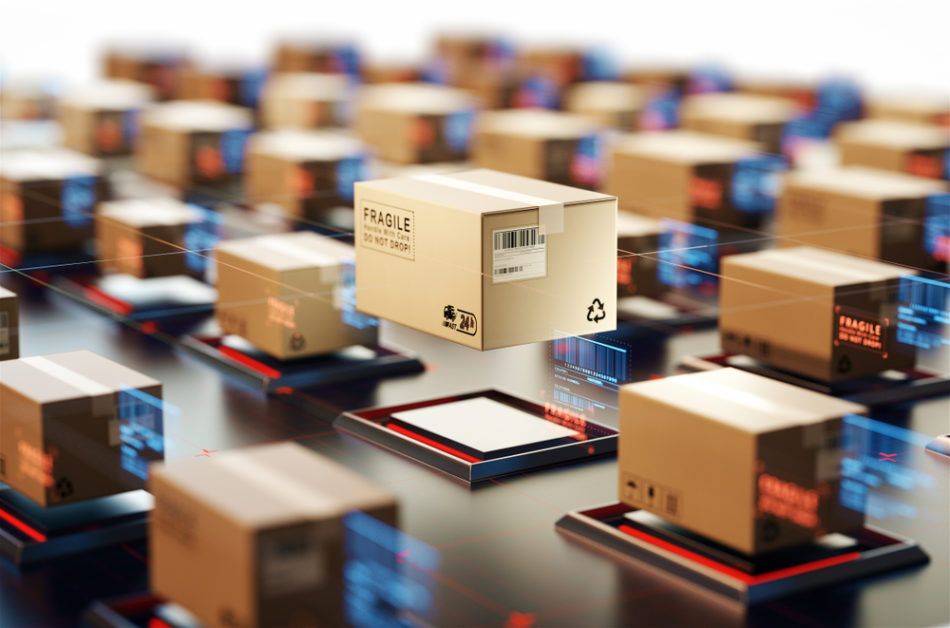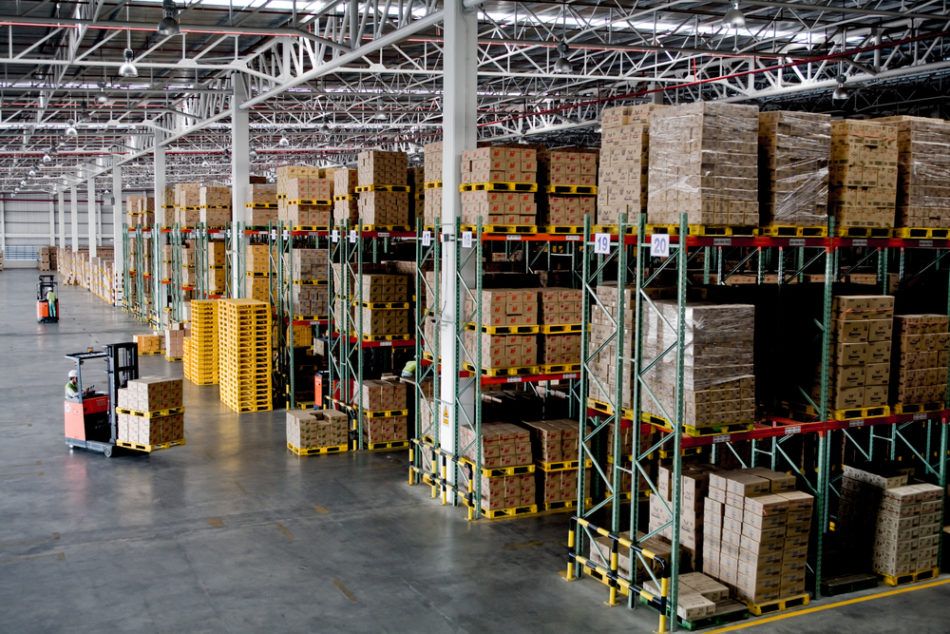As Warehouses Come Online, New Networking Solutions Are Needed
he warehouse of the future will rely on IoT devices to cut costs, improve efficiencies, and boost security. In this article, we’ll discuss what...

Warehouse robots increase productivity and efficiency, and can take on labor-intensive tasks that drain human capital. From inventory drones to automated forklifts, here’s everything you need to know about the current warehouse robotics market.
The average warehouse employee wastes nearly seven weeks per year in “unnecessary motion” — moving around the warehouse performing handling, restocking, inventory management, and picking and packing tasks. This costs the industry an estimated $4.3 billion in annual revenue.
Despite widespread fears that robots are coming to take our jobs, warehouse managers are using machines to improve inefficient movement and decrease costly, time-consuming human tasks. Robots are becoming more common in all areas of the warehouse: the research firm Tractica estimates that worldwide sales of warehouse and logistics robots will top $22 billion by the end of 2021. Amazon acquired robotics company Kiva Systems to automate picking and packing processes at their large warehouses in 2012; since then, they’ve been adding about 15,000 robots per year, according to multiple reports.
There is a huge pool of energy- and productivity-draining tasks that warehouse managers can outsource to machines without impacting the size of their human workforces. From automated retrieval systems to inventory drones, these are the robots changing the way the shipping and warehouse industry is working.
Automated storage and retrieval systems (AS/RS) are robots that help automate the inventory process. This style of robot usually looks like a crane or shuttle designed for navigating between aisles — either on or off a fixed track. AS/RS technology fetches and replaces products efficiently, and usually pairs with warehouse execution software that oversees the entire warehouse operation. Here are some of the leading AS/RS robotics companies, and their most popular models on the market.
Automated guided vehicles (AGVs) shuttle inventory, supplies, and materials around warehouse facilities. These carts run on battery or electric power, and use programmed computer technology to drive a specified route around the warehouse. Some follow simple magnetic strips, while others use LiDAR, camera vision, or sensors to keep from running into aisles and shelves. Using AGVs to fetch and deliver or perform basic assembly tasks saves time and manpower by freeing up your human workers for more high-value tasks. These companies are leading the way in AGV technology:
Much like AGVs, autonomous mobile robots (AMRs) navigate semi-independently around the warehouse to transport inventory from one area to another. However, their technology is a bit different: where AGVs use a preset route, AMRs use onboard sensors, computers, and maps to interpret their surroundings and create their own route. Obviously, AMRs offer more use cases for warehouse inventory management than AGVs do, as AMRs can respond to dynamic environments with more flexibility. These are the top AMR technology solutions on the market today.
These multi-jointed limbs can be deployed to lift, move, turn, and bring goods within a certain range of a warehouse or distribution center. Articulated robotic arms are used to receive and store goods, maneuver heavy products that humans cannot lift, execute picking and packing operations, and perform shipping tasks. Articulated robotic arms are good multi-purpose tools that can be integrated into many parts of the warehouse. Here are a handful of leading robotic arms companies innovating in this emerging space:
Seeking to maximize space and keep track of your warehouse inventory in real time? Autonomous warehouse inventory robots are helping warehouse managers visualize product storage more efficiently than ever. Used in combination with RFID-tagged products and equipment, these warehouse robots can conduct inventory sweeps independently on predetermined schedules programmed by the warehouse manager. These robots can dramatically change the way you manage warehouse space; warehouse managers can identify inefficient storage, placement, and movements, or identify goods that are nearing their expiration dates more quickly. These are a few of the warehouse inventory management robots that can bring new insights and efficiencies to your warehouse:
Much like autonomous inventory robots, UAVs (or, colloquially, drones) can be paired with RFID-scanning technology to provide better inventory visibility around the warehouse. Many warehouses are using aerial vehicles to perform automatic inventory checks and upload data into cloud-based storage services. UAV applications sync with warehouse management systems to provide up-to-date information that a warehouse manager can use to optimize operations and manage inventory more effectively. One major benefit of using warehouse drones is that flight patterns can be adopted to navigate cluttered environments and reduce traffic on the warehouse floor. A number of warehouse robotics companies have begun offering drone solutions for facility managers in need of greater visibility over warehouse operations. These include:
Are any (or all) of these warehouse robotics solutions sounding like the silver bullet to your warehouse management problems? There is one caveat that warehouse managers will need to address before deploying these machine onto the floor. To make real warehouse automation happen, you need a strong, robust, and reliably fast warehouse wireless network — one with comprehensive coverage and ultra-low latency. Moreover, with new devices come new security challenges, and warehouses will need to develop warehouse security solutions designed for the IoT.
For warehouse managers looking to bring automation to the warehouse floor, the best place to start is with a wireless site survey from a warehouse networking expert like Turn-key Technologies (TTI). Our wireless networking experts can make sure your warehouse is equipped to handle the new data streams and user endpoints that warehouse robotics solutions will bring.
With over thirty years of industry experience, the professionals at TTI have the expertise that warehouses need to ensure their networks are prepared for the next generation of automated warehouse robotics solutions.

he warehouse of the future will rely on IoT devices to cut costs, improve efficiencies, and boost security. In this article, we’ll discuss what...

WiFi networks for warehouses: a notoriously difficult challenge. Here are the five most common mistakes made when setting up warehouse WiFi networks....

Up and down the supply chain, profit margins are getting so thin that any minuscule gain in performance or reduction in cost or waste makes a...